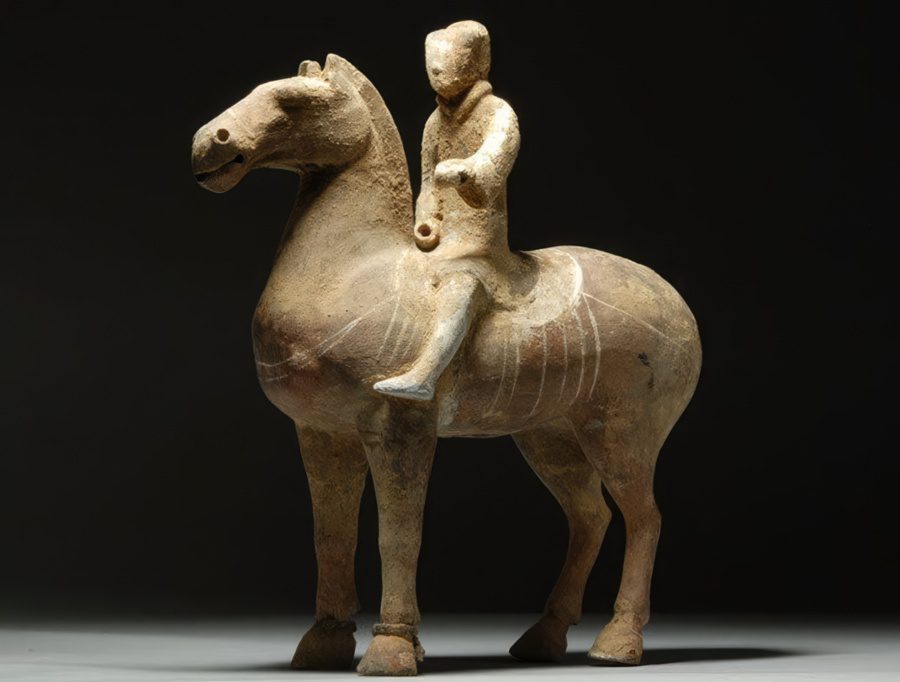Han Dynasty: The Rise, Decline and Impact on Steel Swords

What’s in this article?
The previous “ten thousand generation dynasty” of Qin was overthrown after only fifteen years of power (206 BCE). Nonetheless, China’s unity and the development of a unified, widely scattered Chinese style of civilization would remain the most significant achievement of the Qin Dynasty that would reach its peak in the next ruling family, The Han Dynasty.
The Han Dynasty is known for its many wars and rebellions. But it was also a time of prosperity, especially for the exceptional technological advancements of the swordsmithing world. In this article, we will review the rise and fall of the Han Dynasty and its mark on world history by designing some of the best and key steel swords in east Asia.
Chronology of Important Events
| Year | Important Events |
|---|---|
| 221 BC | Unification of Eastern China by Emperor Qin |
| 202 BC | Han Dynasty Succeeds the Throne |
| 140 – 87 BC | Emperor Wu Expansion |
| 109 – 91 BC | Sima Qian Writes the History of China |
| 9 – 23 AD | Wang Mang Usurps the Throne |
| 25 AD | Capital Moved From Chang’an to LuoyangStart of the Eastern Han Dynasty |
| 220 AD | Fall of the Han Dynasty |
Rise of the Han Dynasty
In 202 BC, a man named Liu Bang established the Western Han Dynasty in a period of warring states against Xiang Yu, which ruled China for the next four hundred years (202 BCE–220 CE). Present-day Chinese people identify as Han because of the Han Dynasty, which established China’s imperial administration and ideology.
The Han Dynasty started because its first emperor, Gaozu, used the unpopular laws established by previous rulers, like the Shang and Zhou dynasties, or by warlord rulerships in The Warring States and conquests by Qin. Many of these laws were maintained.
Gaozu and Han rulership reverted to the traditional feudal grants, an imperial rule with divided territories controlled by the central government. Gaozu linked the northern and troublesome parts of China, under the rule of Xiongnu, by opening trade routes and making marriages.
Historians tell us he was abducted by Xiongnu and held captive, where he was influenced by the use of cavalry and the need for single-edged swords. After Gaozu, Emperor Wu came into power and carried on the longest reign.
We know much about his life thanks to the Chinese “father” of history from this period, Sima Qian. Wu vested his role as Emperor and spread his territory toward Central Asia, Vietnam, Manchuria, and Korea. His main focus was horses, especially the Fergana Horse, or Heavenly Horse in Chinese. This superior breed was smaller and sturdier with high endurance. Wu intended to create a horse that could stand up to the demands of the cavalry mounts to battle the powerful Northern Xiongnu.
The foundation of the Silk Road, the trade route between China and the West, was set with these conquests that would connect the Far East with Europe.
Height

The intellectual achievements of the Han Dynasty owe much to the period’s relative wealth, the expansion of urban centers, and state sponsorship of intellectuals. Scholars were well-rounded individuals who widely studied poetry, philosophy, and history. Universities supported science and astrology, the construction of the watermill as well as the first Chinese paper that replaced the awkward bamboo strips of earlier eras.
Another significant development in the Han period came the moral belief system of Confucianism, which was adopted and became the official ideology of the imperial system. It would become a mark in the Chinese culture of rulership for the next 2000 years.
The mystical Daoist belief system was also very popular with the common people. In Daoism, metals, such as swords, were highly regarded as part of people’s souls. The influence of Buddhism started to appear throughout China by way of the Silk Road as well. Buddhism and Daoism often questioned the rules of Confucianism, leading to rebellious moments.
Chinese art also excelled in creating many popular figurines that can still be found today. Roads were being constructed to connect to more populous towns, and according to the census of inhabitants, around 60 million people lived in China during this period.
The Decline of the Han Dynasty
Much of the wealth being seen was spread to the rich and not the poor, leading to internal instability. Wang Mang of the Xin dynasty seized power from 9 to 23 AD and implemented many reforms. During this time, a cataclysmic flood occurred, causing the Yellow River to destroy many households and take many lives.
The Han Dynasty would return known as the East (Dong) Han or Later Han Era. But it would only have weak rulers that could not control the economic troubles. Bandits, attacks from the north, and the use of paid mercenaries unloyal to the throne led to civil wars like the Yellow Turbans rebellion.
Several Emperors like Jing would prolong the end of the dynasty. Around 220 AD, three kingdoms throughout China were ruled by warlords leading to the abdication of Emperor Xian by the King of Wei, Cao Pi, who was the son of the very strong north ruler Cao Cao. After the fall of the Han, this fragmentation lasted until the Song Dynasty.
Impact on Asian Swordsmithing
The high-quality steel swords manufactured during the Han Dynasty would play a significant role in upcoming centuries for Chinese and other Far East Asian swords, including the Japanese, Vietnamese, Indian, Korean and many others. The single-edged Dao, which is slightly curved, would improve and grow in use, especially during the Tang Dynasty.
Some would even say that the Tang Dao has its roots in this era. Because of its large influence over Japanese swords, it is assumed that The Han Dynasty might have played a factor in creating some of today’s popular samurai swords like the well-known Katana.




